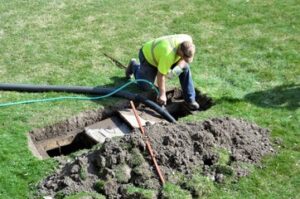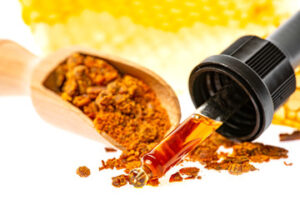The most common reason to have your septic tank pumped is foul odors. These smells are indicative of raw sewage leaking from the septic system.

Regular pumping prevents clogs, blockages and system failure. It also optimizes the efficiency and longevity of your septic system. In addition, it protects the environment and safeguards household health. Contact Septic Tank Pumping Fresno for professional help.
The cost of septic tank pumping can vary depending on a variety of factors. Some of the most important include tank size, location, and additional services or repairs.
Larger tanks require more time and labor to pump, which increases the overall price. In addition, if the tank is in need of repair or cleaning, this will also add to the total price. Finally, the distance to the septic tank disposal site will also increase costs because more fuel is used when transporting waste.
Keeping your septic tank properly sized for the amount of people living in your home is one way to lower septic tank pumping costs. It is also recommended that you avoid adding unnecessary items to your septic system, such as paper towels, wipes, dental floss, and similar products that should be flushed down the toilet. This will help keep your septic system from overflowing, which will prevent costly cleanup and repairs in the future.
A good rule of thumb is that you should have your septic tank pumped every three to five years. However, this is not a set rule and you should be aware of warning signs that indicate the need for pumping sooner. For example, slow draining can be an indication that the septic tank is nearing capacity. Foul odors around the drains and yard can be another indicator. Pooling water or lush green grass over the septic tank or drain field can also indicate that your septic system is experiencing problems.
Regular septic tank pumping helps reduce the risk of clogs and backups, and it can also help prevent damage to your leach field. This process ensures that your septic system is performing as it should and helps protect your property and your investment. It is far less expensive to invest in regular septic tank pumping than it is to pay for cleanup and repairs caused by neglect or infrequent maintenance. It also helps preserve the environment by preventing sewage from seeping into local water sources. Ultimately, routine septic tank pumping is well worth the expense.
Prevents Clogs & Blockages
Keeping your septic tank pumped helps you avoid the costly problems associated with clogs and blockages. Those problems are caused when solid waste isn’t properly processed through the system. This can cause wastewater to back up into your home through sinks and toilets that don’t drain or flush correctly. Those problems can result in expensive and messy repairs, or even a full tank replacement. By catching these problems during regular inspections, you can get them fixed quickly and easily.
During the pumping process, a professional service technician will check the levels of sludge and scum in your septic tank to see how much needs to be removed. They’ll also inspect your inlet and outlet baffles for signs of damage or other issues. They’ll use a powerful vacuum hose to pump out the sludge and scum from the tank, then clean out the inlet and outlet pipes to prevent leaks and other problems.
When you’re deciding how often to have your septic tank pumped, consider your family’s water usage. Using too much water at once reduces the amount of time available for your septic system to fully process all of the wastewater and sewage that enters it.
It’s also important to make sure that non-biodegradable wastes aren’t getting into your septic system, as they can lead to serious clogs and other problems. This includes items labeled as “flushable,” such as wipes, diapers, and certain hygiene products. Also, don’t pour grease down your drains. Grease solidifies and coats the lining of your pipes, which can cause them to clog or overflow.
Lastly, avoid harsh chemicals like bleach and heavy cleaners, as these can destroy the healthy bacteria that keep your septic system working efficiently. Instead, use natural, non-toxic cleaning products to remove any dirty residue left behind.
Having your septic tank pumped regularly is one of the best things you can do to extend its lifespan and keep your house free of odors, waste, and other health hazards. It’s also much cheaper than dealing with a costly septic tank repair or replacement, so it pays to be proactive about maintaining your septic system!
Extended System Lifespan
The septic system pumps wastewater from your home to the tank and drain field. A regularly scheduled pumping schedule prevents solid waste from overflowing into the drain field and reduces the risk of clogs and other serious system failure. It also ensures that wastewater is properly absorbed by the soil, which can help to extend the lifespan of the system.
The overall lifespan of a septic system is dependent on several factors, including household size and water usage habits, the type of system, and soil conditions. Conventional septic systems typically last 20 to 30 years, while aerobic treatment units tend to have a shorter lifespan.
Having a consistent septic tank pumping schedule helps to extend the lifespan of your system, as accumulated sludge and solid waste can lead to clogs and system failure. Regular inspections help to identify minor problems and repair them before they become major issues.
Other practices that can help to extend the lifespan of a septic system include using a high-quality septic tank that is designed for your property’s unique needs, and practicing good wastewater habits. It is important to only flush human waste and toilet paper, and avoid putting other materials into the tank or drains. Items like feminine hygiene products, paper towels, and some “flushable” cleaning products can cause clogs and reduce the capacity of the septic system. Grease, harsh chemicals, and drain cleaners can also damage the bacteria in your septic tank that break down waste.
Maintaining a consistently pumped septic system is one of the best ways to prevent inconvenient emergencies and long-term system damage. Keeping records of the septic tank pumping schedule can also help to increase the value of your home, as potential buyers will know that the septic system has been well-maintained and is likely to last for decades.
Increased Property Value
In addition to preventing clogs and blockages, regular septic tank pumping extends the lifespan of a septic system. As a result, it can save homeowners money in the long run by avoiding costly repairs and replacements. In turn, this can increase a property’s overall value and help to attract prospective home buyers.
Despite its relative simplicity, a septic tank is actually a sophisticated wastewater treatment unit that handles all the waste and liquid from a household’s toilets, sinks, and showers. As such, it is vital that this system remains functional and free of clogs or blockages. Without routine maintenance, septic tanks may begin to overflow or experience other serious issues, which could ultimately cause damage to the drain field and surrounding property.
If you’re considering selling your Flesherton home, it’s critical to get your septic system pumped regularly. This prevents the system from becoming a major turnoff for potential buyers, and will also ensure that any future owners are aware of the condition of the septic tank and system.
Failing to get your septic system pumped can lead to expensive and disruptive repairs, which is something that many prospective buyers will look out for when purchasing a home. A septic tank that has been neglected for too long can also be unsightly, which can further deter buyers and hinder the sale of your property.
When looking for a professional septic tank pumping service, it’s important to find one with an excellent reputation and a solid track record of customer satisfaction. Look for a provider with extensive experience and expertise in the industry, as well as comprehensive services that include inspections and repair work. Choosing a company with transparent pricing will also help to keep your costs down. Finally, choose a provider that uses modern equipment and provides responsive customer support.


